-
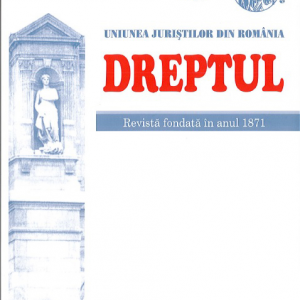 The Treaty of Trianon between the Allied and Associated Powers and Hungary was signed on 4 June 1920 and dramatically changed the political map of Central Europe. Although the system of treaties concluded at the Paris Peace Conference did not prove viable, the political-territorial order created at Trianon – an expression of peoples’ right to self-determination – has survived. The present text aims to examine the circumstances of the conclusion of the Treaty of Trianon, its content and its long-term effects on the central European political order. Finally, the author makes a general evaluation of the Romanian-Hungarian relations in the light of their relation to the provisions of this Treaty.
The Treaty of Trianon between the Allied and Associated Powers and Hungary was signed on 4 June 1920 and dramatically changed the political map of Central Europe. Although the system of treaties concluded at the Paris Peace Conference did not prove viable, the political-territorial order created at Trianon – an expression of peoples’ right to self-determination – has survived. The present text aims to examine the circumstances of the conclusion of the Treaty of Trianon, its content and its long-term effects on the central European political order. Finally, the author makes a general evaluation of the Romanian-Hungarian relations in the light of their relation to the provisions of this Treaty. -
 The provisions written down in the Peace Treaties of 1947 have decisively determined the international political alignment of the five former enemy states. Regardless of the divergences and contradictions occurred within the Great Alliance during the war, the post-war political situation of the defeated would have been different if the clauses of this international juridical act were drafted in accordance with the norms and customs of international law. The situation of fact became fully legitimate in the Peace Treaties elaborated by the winners and accepted by the defeated in the conditions of the lack of some viable options in the realities of the moment.
The provisions written down in the Peace Treaties of 1947 have decisively determined the international political alignment of the five former enemy states. Regardless of the divergences and contradictions occurred within the Great Alliance during the war, the post-war political situation of the defeated would have been different if the clauses of this international juridical act were drafted in accordance with the norms and customs of international law. The situation of fact became fully legitimate in the Peace Treaties elaborated by the winners and accepted by the defeated in the conditions of the lack of some viable options in the realities of the moment. -
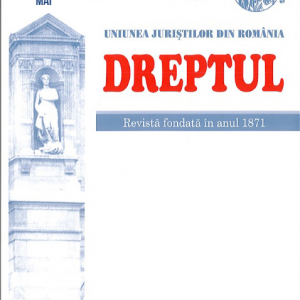 În spațiul public românesc din ultimii patru ani, discuțiile referitoare la revizuirea Constituției au devenit atât de uzuale, încât riscă să bagatelizeze nu doar ideea de revizuire a Constituției, ci chiar conceptul de lege fundamentală. În marea lor majoritate, dezbaterile publice referitoare la necesitatea modificării Constituției au stat sub semnul unor viziuni personale și personalizate cu privire la rolul instituțiilor fundamentale ale statului. Cel mai adesea, opțiunile formulate de maniera cea mai vocală au avut ca punct de pornire situațiile conflictuale în care au fost implicate diferite autorități publice. În sine, această abordare, eminamente din perspectivă conflictuală, deși utilă și poate chiar necesară, este incompletă și insuficientă.
În spațiul public românesc din ultimii patru ani, discuțiile referitoare la revizuirea Constituției au devenit atât de uzuale, încât riscă să bagatelizeze nu doar ideea de revizuire a Constituției, ci chiar conceptul de lege fundamentală. În marea lor majoritate, dezbaterile publice referitoare la necesitatea modificării Constituției au stat sub semnul unor viziuni personale și personalizate cu privire la rolul instituțiilor fundamentale ale statului. Cel mai adesea, opțiunile formulate de maniera cea mai vocală au avut ca punct de pornire situațiile conflictuale în care au fost implicate diferite autorități publice. În sine, această abordare, eminamente din perspectivă conflictuală, deși utilă și poate chiar necesară, este incompletă și insuficientă. -
 The formation of public law in the Romanian Principalities bears, on the one hand, the imprint of the political will of the states with strong influence in this part of Europe in the first half of the 19th century, and, on the other hand, it reflects the spirit of Western constitutional thought and practice, much modernized after the French Revolution of 1789. Concerned with the constitutional and administrative modernization of the two Principalities were mainly Russia, France, England and Austria, each of these great European powers pursuing, in fact, their own objectives, of political and economic nature. Instead, Turkey did not support at all the modernization of Wallachia and Moldova, being interested in maintaining the Phanariot regime. At the confluence of the contradictory interests of these powers, the Principalities did not have an active, decisive role in their own constitutional and administrative modernization. Nevertheless, the changes and transformations produced in the Principalities at the initiative and with the determination of the mentioned states, were generated by the clauses of some international documents (the Treaty of Adrianople of 1829, the Peace Treaty between Russia and Turkey of 1856 and the Paris Convention of 1858). To these it is added the Developing Statute of the Paris Convention, imposed by the will of Prince Alexandru Ioan Cuza
The formation of public law in the Romanian Principalities bears, on the one hand, the imprint of the political will of the states with strong influence in this part of Europe in the first half of the 19th century, and, on the other hand, it reflects the spirit of Western constitutional thought and practice, much modernized after the French Revolution of 1789. Concerned with the constitutional and administrative modernization of the two Principalities were mainly Russia, France, England and Austria, each of these great European powers pursuing, in fact, their own objectives, of political and economic nature. Instead, Turkey did not support at all the modernization of Wallachia and Moldova, being interested in maintaining the Phanariot regime. At the confluence of the contradictory interests of these powers, the Principalities did not have an active, decisive role in their own constitutional and administrative modernization. Nevertheless, the changes and transformations produced in the Principalities at the initiative and with the determination of the mentioned states, were generated by the clauses of some international documents (the Treaty of Adrianople of 1829, the Peace Treaty between Russia and Turkey of 1856 and the Paris Convention of 1858). To these it is added the Developing Statute of the Paris Convention, imposed by the will of Prince Alexandru Ioan Cuza -
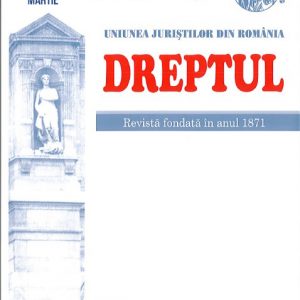 This study deals with the issues related to the regulation included in Article 262 of the new Criminal Code of Romania. The author notes that, as compared to the regulation prior to the entry into force of the new Criminal Code, the taking over in this Code of the norm of incrimination previously included in Article 70 of the Government Emergency Ordinance No 105/2001 on the state border of Romania has been preferred as a reflection of the importance given to the social value of the regime of the state border. At the same time, it is pointed out that the norm in the Code in force is subject to completion by provisions included in other normative acts, inferior to the law, as in the Government Emergency Ordinance No 194/2002 on the regime of foreigners in Romania.
This study deals with the issues related to the regulation included in Article 262 of the new Criminal Code of Romania. The author notes that, as compared to the regulation prior to the entry into force of the new Criminal Code, the taking over in this Code of the norm of incrimination previously included in Article 70 of the Government Emergency Ordinance No 105/2001 on the state border of Romania has been preferred as a reflection of the importance given to the social value of the regime of the state border. At the same time, it is pointed out that the norm in the Code in force is subject to completion by provisions included in other normative acts, inferior to the law, as in the Government Emergency Ordinance No 194/2002 on the regime of foreigners in Romania. -
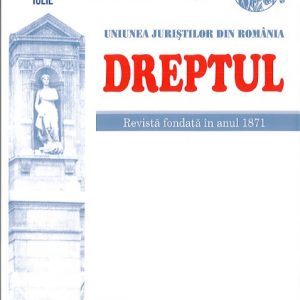 This study aims to identify the arguments for which, in the current legislative context, it is not admissible to order the sending of the case for retrial by the judgment pronounced on the application for annulment. The application for annulment, as a legal remedy, is regulated within the procedure of payment order.
This study aims to identify the arguments for which, in the current legislative context, it is not admissible to order the sending of the case for retrial by the judgment pronounced on the application for annulment. The application for annulment, as a legal remedy, is regulated within the procedure of payment order. -
 The present article aims to analyse the antinomy contravention – offence by studying the incrimination of the deed of disturbance of public order and peace. Thus, the legislator, within Article 2 point 1 of the Law No 61/1991 for sanctioning the acts of violation of certain norms of social coexistence, of the public order and peace, incriminates the contravention consisting in committing in public of obscene deeds, acts or gestures, addressing of insults, offensive or vulgar expressions, threats with acts of violence against persons or their property, which may disturb public order and peace or provoke the indignation of citizens or harm the dignity and honour thereof or public institutions. On the other hand, according to Article 371 of the Criminal Code, the act of the person who, in public, by violence committed against persons or property or by serious threats or injuries to the dignity of the persons, disturbs the public order and peace is punished by imprisonment from 3 months to 2 years or with fine. It is easy to find, comparatively analysing, that there is a parallelism of the incriminations, which extract their vigour from spheres of different legal liability, thus the judicial interpreter having the difficult mission to distinguish the conditions in which the two forms of liability are employed, respectively if both can be retained simultaneously, successively or the application of one of them brings about ipso facto the removal of the other.
The present article aims to analyse the antinomy contravention – offence by studying the incrimination of the deed of disturbance of public order and peace. Thus, the legislator, within Article 2 point 1 of the Law No 61/1991 for sanctioning the acts of violation of certain norms of social coexistence, of the public order and peace, incriminates the contravention consisting in committing in public of obscene deeds, acts or gestures, addressing of insults, offensive or vulgar expressions, threats with acts of violence against persons or their property, which may disturb public order and peace or provoke the indignation of citizens or harm the dignity and honour thereof or public institutions. On the other hand, according to Article 371 of the Criminal Code, the act of the person who, in public, by violence committed against persons or property or by serious threats or injuries to the dignity of the persons, disturbs the public order and peace is punished by imprisonment from 3 months to 2 years or with fine. It is easy to find, comparatively analysing, that there is a parallelism of the incriminations, which extract their vigour from spheres of different legal liability, thus the judicial interpreter having the difficult mission to distinguish the conditions in which the two forms of liability are employed, respectively if both can be retained simultaneously, successively or the application of one of them brings about ipso facto the removal of the other. -
 Confusing subject of study for a jurist, humanity is an evasive notion because it manifests itself in the individual but is, at the same time, external to it; it claims universality but the way each one looks at is as specific as each one. Myth or legal symbol, „humanity” is a term with variable content, both in the common and the legal language, because, at the same time, it represents the human essence, the goodness but also the race, the human species. The various meanings are indissolubly linked because they are intertwined, so that the „individual” humanity, the one that each individual carries himself, is inseparable from the „collective” humanity, the human community. This together construction results from legal instruments which reflect the ambivalence of the concept, the crime against humanity is, at the same time, a crime against the human essence and a crime against the human race, as its constituent elements demonstrate. Through time, humanity has born and fed contradictory legal discourses, so in international law it is more than a „concept slogan”, because its influence is tangible, but nonetheless, humanity has not simplified the international legal order but has made it even more complex.
Confusing subject of study for a jurist, humanity is an evasive notion because it manifests itself in the individual but is, at the same time, external to it; it claims universality but the way each one looks at is as specific as each one. Myth or legal symbol, „humanity” is a term with variable content, both in the common and the legal language, because, at the same time, it represents the human essence, the goodness but also the race, the human species. The various meanings are indissolubly linked because they are intertwined, so that the „individual” humanity, the one that each individual carries himself, is inseparable from the „collective” humanity, the human community. This together construction results from legal instruments which reflect the ambivalence of the concept, the crime against humanity is, at the same time, a crime against the human essence and a crime against the human race, as its constituent elements demonstrate. Through time, humanity has born and fed contradictory legal discourses, so in international law it is more than a „concept slogan”, because its influence is tangible, but nonetheless, humanity has not simplified the international legal order but has made it even more complex. -
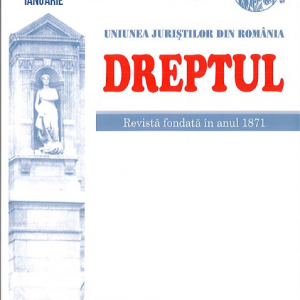 Analyzing the jurisdiction of the courts as it is regulated by the new (Romanian) Civil Procedure Code (Law No 134/2010, republished, entered into force on 15 February 2013), the author comes to the conclusion that this Code regulates a single case of alternative jurisdiction of public order, that is Article 113 (1) point 1 („Besides the courts provided in Articles 107–112, there shall also be competent: 1. the court having jurisdiction over plaintiff’s domicile, in the applications concerning the determination of filiation;...”).
Analyzing the jurisdiction of the courts as it is regulated by the new (Romanian) Civil Procedure Code (Law No 134/2010, republished, entered into force on 15 February 2013), the author comes to the conclusion that this Code regulates a single case of alternative jurisdiction of public order, that is Article 113 (1) point 1 („Besides the courts provided in Articles 107–112, there shall also be competent: 1. the court having jurisdiction over plaintiff’s domicile, in the applications concerning the determination of filiation;...”). -
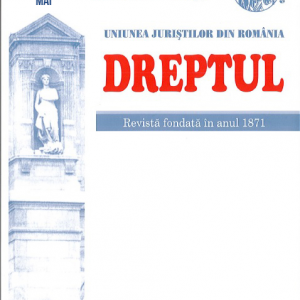 Trying to integrate the precautionary principle in the law of torts is a challenge that took the author back to the origins of tort law: responsibility and its etymological, philosophical and juridical roots. The findings of this intellectual endeavor envisage the expansion of tort law towards new dimensions of time, space and human relationships. With a shift of perspective, from the past towards the future, tort law reinvents itself by facing uncertainty, by reforming its mathematics and rediscovering its guiding principles. The goal of this study is to establish the principles and conditions of preventive tort law, the civilian tort law expression of the preventive and precautionary principles.
Trying to integrate the precautionary principle in the law of torts is a challenge that took the author back to the origins of tort law: responsibility and its etymological, philosophical and juridical roots. The findings of this intellectual endeavor envisage the expansion of tort law towards new dimensions of time, space and human relationships. With a shift of perspective, from the past towards the future, tort law reinvents itself by facing uncertainty, by reforming its mathematics and rediscovering its guiding principles. The goal of this study is to establish the principles and conditions of preventive tort law, the civilian tort law expression of the preventive and precautionary principles. -
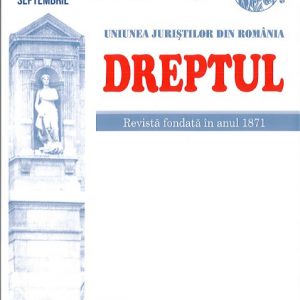 This paper presents a point of view regarding the correlated interpretation of both articles 53 from the European Convention for the Protection of Human Rights and Fundamental Freedoms (hereinafter, ECHR) and the Charter of Fundamental Rights of the European Union (hereinafter, the Charter) in the context of EU accession to ECHR. Opinion 2/13 of the EU Court of Justice from 18 December 2014 establishes that there is no provision in the Commission’s project agreement for EU accession to ECHR that envisages to ensure a coordination between both articles 53, allowing Member States to provide for higher standards on human rights protection than ECHR or the Charter, which could entail the undermining of the primacy, unity and effectiveness of EU law.
This paper presents a point of view regarding the correlated interpretation of both articles 53 from the European Convention for the Protection of Human Rights and Fundamental Freedoms (hereinafter, ECHR) and the Charter of Fundamental Rights of the European Union (hereinafter, the Charter) in the context of EU accession to ECHR. Opinion 2/13 of the EU Court of Justice from 18 December 2014 establishes that there is no provision in the Commission’s project agreement for EU accession to ECHR that envisages to ensure a coordination between both articles 53, allowing Member States to provide for higher standards on human rights protection than ECHR or the Charter, which could entail the undermining of the primacy, unity and effectiveness of EU law. -
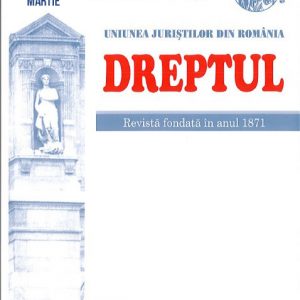 Competența materială de a judeca propunerea de arestare preventivă a inculpatului față de care s-a pus în mișcare acțiunea penală pentru infracțiunea de nerespectare a regimului armelor și munițiilor, prevăzută de art. 342 C.pen., aparține judecătorului de drepturi și libertăți din cadrul judecătoriei, chiar dacă în cauză s-a început urmărirea penală in rem pentru infracțiunea de constituirea unui grup infracțional organizat, prevăzută de art. 367 C.pen.
Competența materială de a judeca propunerea de arestare preventivă a inculpatului față de care s-a pus în mișcare acțiunea penală pentru infracțiunea de nerespectare a regimului armelor și munițiilor, prevăzută de art. 342 C.pen., aparține judecătorului de drepturi și libertăți din cadrul judecătoriei, chiar dacă în cauză s-a început urmărirea penală in rem pentru infracțiunea de constituirea unui grup infracțional organizat, prevăzută de art. 367 C.pen.
